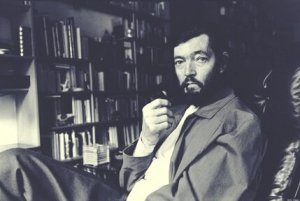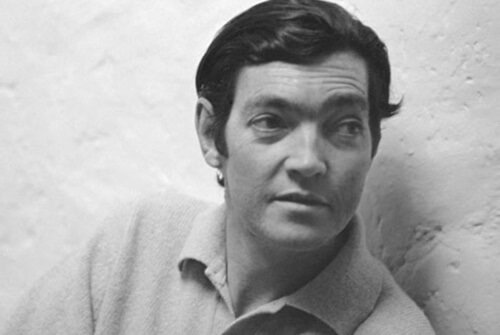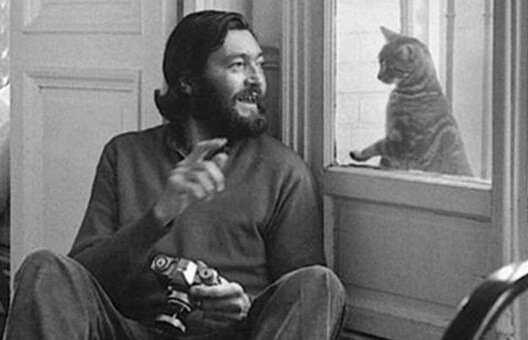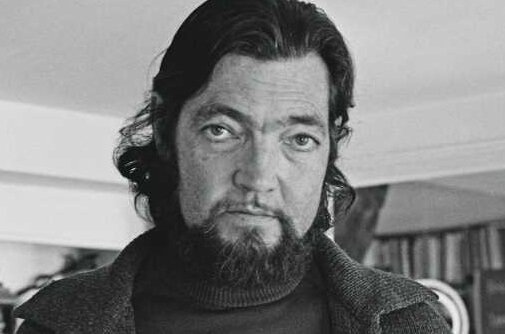Julio Cortázar: The Life of an Argentinian Intellectual


Written and verified by the psychologist Valeria Sabater
Julio Cortázar was an amazing storyteller. He fascinated us with Hopscotch and showed us that everyday life can also be special and unpredictable. Few Latin American authors have made as much of an impact as he did. His legacy will continue to live on for many generations to come.
Not long ago was the 35th anniversary of his tragic death from leukemia. But even now, almost four decades later, his name lives on as one of the most important authors in history.
He had an amazing ability to write short stories with a wonderfully delicate, poetic prose. His style, often surrealist, also shined a light and cast a shadow on our daily lives, on the rawest and most inspiring parts of them. For example, people still consider his short story collection, Bestiario, a timeless masterpiece.
He wrote countless books, leaving us with tons of stories, novels, essays, and poetry. But beyond the literary side of things, he was also a people who stood by his ideals. In fact, Julio Cortázar became French as a way of protesting the military dictatorship in his country, Argentina.
“Only in dreams, in poetry, in play do we sometimes arrive at what we were before we were this thing that, who knows, we are.”
-Julio Cortázar-

A Biography of Julio Cortázar
Julio Cortázar was born in 1914 in Belgium, almost at the exact same time as the start of World War I. His family was Argentinian, but spent a few years in Europe due to his father’s job as the Argentinian ambassador in Brussels.
Five years later, Cortázar first visited his parents’ country. Argentina was one of the two countries (along with France) that truly made an impact on his personal life and literature.
A Man of Letters
In Argentina, he studied education and worked as a teacher in small towns for a few years. Then, in 1951, he returned to his favorite city, Paris, after winning a grant. He ended up spending some time there working as a translator for UNESCO and pursuing his literary career.
But by the time he left Argentina, he had already published some extremely important books, including his famous Bestiario. He had also worked in different magazines, including Realidad and Los Anales de Buenos Aires, whose editor was another famous writer, Jorge Luis Borges.
However, he only started to stand out in the 60s. During this time, Cortázar became a major figure in Latin American and Spanish-language literature. His name appeared alongside huge figures such as Gabriel García Márquez, Juan Rulfo, Mario Vargas Llosa, Mario Benedetti, and his admirer Jorge Luis Borges.
Cortázar had a delicate, innovative style and a true social consciousness that led him to identify early on with marginalized groups and social classes.
Cortázar: The Social Activist
Julio Cortázar never became a symbol of the classic intellectual: private and introverted. In his younger days, he participated in many protests against Juan Perón and his military dictatorship. But it wasn’t until the 60s that he became a truly confident, passionate activist. Up to that point, he had reserved his voice and ideas mostly for his literary works.
Books such as The Other Shore and stories such as “The Captured House” were symbolic of the tumultuous period Argentina experienced. These works helped him gain recognition and access to the public sphere, so he started to develop a firmer political personality.
For example, he went to Cuba to meet Fidel Castro, attended Salvador Allende’s inauguration as president of Chile, and was a supporter of the Sandinista movement in Nicaragua.
He suddenly became a radical writer, inspiring thousands of people and trying to defend human rights. He held conferences and published important books such as Chili, le dossier noir, where he spoke very openly about Pinochet’s brutal regime in Chile.
Unfortunately, his activism wasn’t well received by the Argentinean government. In fact, the secret police even began an ongoing investigation of him due to his political beliefs.

That political pressure (and persecution) ultimately led Cortázar to apply for French citizenship so that he could permanently move to his beloved city, Paris. He lived out his final days there until he died from leukemia.
“Of all our feelings the only one which really doesn’t belong to us is hope. Hope belongs to life, it’s life itself defending itself.”
-Julio Cortázar-
Hopscotch: A Literary Treasure
The publication of Hopscotch in 1963 was a turning point in Spanish-language literature. With it, Cortázar did something that had never been done before.
His ability to come up with stories and bring language to life, his craft, his style, and his amazing plots all worked together to create a new genre.
Structure
If you know anything about Hopscotch, you know that there are two different ways to read it. Firstly, you can do it the “regular” way, by reading from chapter 1 to chapter 56. But as Cortázar himself explains at the beginning of the book, the other way is to follow the “Table of Instructions”.
If you follow the second path, you start from chapter 73 and follow the order shown at the foot of each chapter’s end. That’s it. But the best way to read this book is to read it both ways so that you can get a full sense of just how amazing it is and open your mind to new perspectives and interpretations.

Style
Cortázar wrote Hopscotch in poetic prose. He didn’t just have the one goal of surprising readers with the book’s innovative structure. His real goal was for readers to reflect on how a story can be re-written, twisted, re-thought, and even destroyed.
He strayed away from conventional language and chose to portray the most emotional parts of our mind. He did this through word games, changes in punctuation, and neologisms (new words).
Plot
The main character in the book is Horacio Oliveira, who’s a cold, analytical, an intellectual man. He’s also in a crisis that symbolizes a large part of the population. But his world changes all of a sudden when he meets one of the most unforgettable characters in all of literature: La Maga.
She’s pure, emotional, spontaneous, and free of conventional qualities. Her character contains the true essence of surrealism, the movement that influenced Cortázar while he was in France.
She’s a challenge to society. She’s also the opposite of Horacio Oliveira: an extraordinary, but primitive person. This woman has a strangely strong desire to be skilled with words. However, the intellectuals around her envy her intuition, her magic, and her simplicity.
Hopscotch is symbolic of the two spheres of society: the intellectual and the emotional, the rigid and the revolutionary, the existential and the conventional… There are few books as mentally stimulating as this one, few that can help you reflect so deeply.
All cited sources were thoroughly reviewed by our team to ensure their quality, reliability, currency, and validity. The bibliography of this article was considered reliable and of academic or scientific accuracy.
- Herraez, Miguel (2011) Julio Cortázar, una biografía revisada. Alreves
This text is provided for informational purposes only and does not replace consultation with a professional. If in doubt, consult your specialist.








